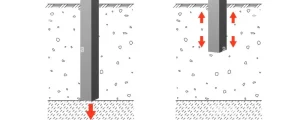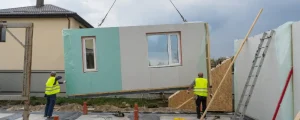Resting in the right direction is decisive for your well-being. Many individuals overlook how their sleep posture can influence the quality of their rest and overall health. It’s also essential to understand how much sleep one needs to maintain good...
View More
Stamped concrete is gaining huge popularity in the construction sector. As a decorative technique, it is expected to achieve rapid growth, and more urban spaces are adapting to it. They are providing countless advantages to the structures, which make it...
The real success of a building’s strength is based on its foundation. When constructing on unstable soil conditions, deep foundations are necessary to ensure the building’s integrity and strength. Pile foundations achieve this by inserting piles underground to support the...
The tulsi plant is commonly found in every Hindu home. It is recognized as basil that acts as a remedy for seasonal ailments such as flu, cold, and cough. As per Vastu, having a tulsi plant in a home brings...
More and more people prefer modular construction over the traditional ones. It’s because of the enhanced convenience and affordability. Are you planning to build a new home or residential building? If so, you should consider modular construction to revolutionise the...
Looking for an extremely comfortable and affordable flooring option? If yes, then vinyl is the right choice. Under low maintenance, your floors shine brighter, which gives a warm welcome to the guests. Adding to this, vinyl flooring is water-resistant, can...
A look of a home can be elevated by the selection of the right roof type. It brings instant aesthetic appeal and makes it an excellent part of the whole infrastructure. One of the most common and recognisable roof types...
Is creating a vibrant and inviting atmosphere your goal? If so, then you can opt for mosaic flooring. Yeah, stunning mosaic flooring would be the perfect choice to commemorate your nostalgic memories and create good vibes for the future generation....
The way of construction is evolving to a new level and adapting to new technologies, building techniques, and materials. Many of you know very well about sustainable construction methods and how they are beneficial for the environment and property owners. ...
Have you ever heard about green cement? If you have not, there is no need to worry, as this blog will help you understand green cement, along with its types, benefits, and much more. But, why consider green cement other...










